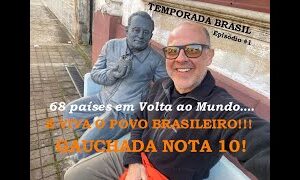A coroa norueguesa é a moeda oficial da Noruega e tem por símbolo Kr e por código NOK. Pode ser dividida em 100 ore e é emitida pelo Banco Central da Noruega.
As moedas são 50 ore, 1, 5, 10 e 20 coroas, assim como notas de 50, 100, 200, 500 e 1000.
As moedas norueguesas trazem representada a efígie do rei Harald V ou símbolos da monarquia ou do país, nomeadamente barcos vikings. As notas vêm ilustradas com os escritores Peter Christen Asbjornsen e Sigrid Undest, a cantora de ópera Kirsten Flagstad, o físico Kristian Birkeland e o pintor Edgard Munich, tal como paisagens, a Ópera Nacional da Noruega, a ursa maior e a aurora boreal.
As primeiras moedas cunhadas na Noruega surgiram perto do ano 1000 e eram copiadas de umas moedas inglesas da época.
Por volta de 1380, a Noruega uniu-se à Dinamarca e adotou o sistema monetário dinamarquês, onde vigorava a coroa de ouro. A união durou até 1814, quando a Noruega se uniu à Suécia. Nesta altura, passou a usar como moeda o “speciesdaler”, assim como o “riksdalker”. Em 1817, o Banco da Noruega começou a emitir notas.
Em 1875, quando a Noruega aderiu à União Monetária da Escandinávia, entrou em vigor a coroa sueca. Em 1905, a Noruega conquistou a independência e criou a coroa norueguesa, com valor equivalente à sueca.
A União Monetária da Escandinávia durou até 1914, ano do início da Primeira Guerra Mundial, mas depois os países integrantes (Suécia, Dinamarca e Noruega) mantiveram as respectivas coroas em circulação.
Entre 1940 e 1945, durante a Segunda Guerra Mundial, a Noruega foi invadida pela Alemanha e a coroa foi indexada ao marco alemão. Após a guerra, a coroa surgiu indexada numa fase inicial à libra esterlina, seguindo-se uma ligação ao dólar norte-americano.
Veja o quanto vale a Coroa Norueguesa:
Kr$ 1 = R$ 0,30 ou US$ 0,18 ou € 0,13
Norwegian Krone
The Norwegian Krone is the official currency of Norway and its symbol is Kr and its code NOK. It can be divided in 100 ores and it is issued by the Central Bank of Norway.
The coins are 50 ore, 1, 5, and 20 crowns, and there are bills of 50, 100, 200, 500 and 1000.
The Norwegian coins bear the effigies representing King Harald V or symbols of the monarchy or country, including the Vicking Vessels.
The bills are illustrated with writers like Peter Christen Asbjornsen and Sigrid Undest, the opera singer Kirsten Flagstad, the physicist Kristian Birkeland and the painter Edgard Munich, as well as with landscapes, The National Opera of Norway, the big dipper and the Northern lights.
The first minted coins were introduced around the year 1000 and were copied from the English coins of the time. By the year 1380, Norway was united with Denmark and the Danish monetary system was adopted, and so the golden krone was put into circulation. The union lasted until 1814, when Norway and Sweden were united. A t the time, the currency used was “speciesdaler”, as well as the “riksdalker”. In 1817, The Norwegian Bank began issuing notes.
In 1875, when Norway joined the Scandinavian Monetary Union, the Swedish crown came into effect. In 1905, Norway became independent and established the Norwegian Krone, with an equivalent value to the Swedish.
The Scandinavian Monetary Union lasted until 1914, the early year of World War I, but than the member countries (Sweden, Denmark and Norway) kept their crowns in circulation.
Between 1940 and 1945, during World War II, Germany invaded Norway and the krone was indexed to the German mark. After the war, at a first stage the krone was indexed to the sterling pound, followed by a connection to the U.S. dollar.
See the Norwegian Krone currency exchange rate:
Kr$1=R$ 0, 30 or US$ 0.18 or € 0, 13







Respostas de 2
Meu amigo, eu estou muito feliz por você. Fiquei mais de um mês sem acompanhar o seu site, sabe como é… um probleminha ali, um compromisso acolá e quando nos damos conta já se passaram n dias. Parabéns por mais essa aventura (que já deu certo). Você é merecedor de tudo isso. Não tenho palavras para descrever a pessoa maravilhosa que você é. Devo muito de quem sou profissionalmente e pessoalmente a você. Aproveite ao máximo esses quatro meses.
Valeu Maurício!
Vc é um cara muito especial!!!
Um grande abrç. amigão!